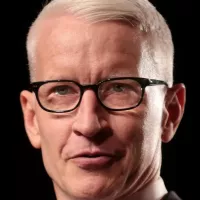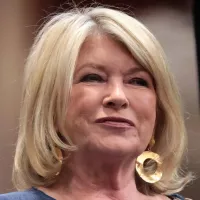Burger King, founded in 1953 as Insta-Burger King, is a global hamburger fast-food chain. David Edgerton and James McLamore, Miami-based franchisees, acquired the company in 1959 after its initial financial struggles. The company changed ownership multiple times, including a public offering in 2002 led by TPG Capital, Bain Capital, and Goldman Sachs Capital Partners. In 2010, 3G Capital of Brazil acquired a majority stake and restructured the company. Ultimately, 3G and Berkshire Hathaway merged Burger King with Tim Hortons, creating Restaurant Brands International as the new Canadian-based parent company.
July 23, 1953: Insta-Burger King Founded
On July 23, 1953, Insta-Burger King, an American multinational chain of hamburger fast food restaurants, was founded in Jacksonville, Florida.
1953: Insta-Burger King Founded
In 1953, the predecessor to Burger King was founded in Jacksonville, Florida, as Insta-Burger King.
1953: Original Menu in Jacksonville
When the predecessor of Burger King first opened in Jacksonville in 1953, its menu consisted predominantly of basic hamburgers, French fries, soft drinks, milkshakes, and desserts.
1954: Burger King Founding
In 1954, Burger King was founded and has since employed varied advertising programs, both successful and unsuccessful.
1954: Legal Disputes Since Founding
Since its founding in 1954, Burger King has faced numerous legal disputes as both plaintiff and defendant, with varying responses depending on ownership and executive staff.
1957: Introduction of the Whopper
In 1957, Burger King added the Whopper sandwich to its menu, a quarter-pound hamburger created by James McLamore and David Edgerton to differentiate BK from other burger outlets.
1959: Burger King Corporation begins franchising
In 1959, Burger King Corporation began franchising using a regional model, where franchisees purchased the right to open stores within a geographic region. These franchise agreements gave BKC very little oversight control of its franchisees which resulted in issues of product quality control, store image and design, and operational procedures.
1959: Edgerton and McLamore Purchased Insta-Burger King
In 1959, after Insta-Burger King experienced financial problems, its two Miami-based franchisees, David Edgerton and James McLamore, purchased the company.
1963: Burger King expands to Puerto Rico
In 1963, Burger King began its foray into locations outside of the continental United States with a store in San Juan, Puerto Rico.
1967: Burger King Sold to Pillsbury
In 1967, James McLamore and David R. Edgerton sold Burger King to the Pillsbury Company after running it independently for eight years.
1969: Burger King opens first Canadian restaurant
In 1969, shortly after Pillsbury acquired the chain, Burger King opened its first Canadian restaurant in Windsor, Ontario.
1971: Burger King expands to Australia
In 1971, Burger King expanded to Australia with a restaurant in the Perth suburb of Innaloo.
1971: Burger King expands to Australia as Hungry Jack's
When Burger King set about establishing operations in Australia in 1971, it found that its business name was already trademarked. As a result, the Australian franchisee, Jack Cowin, selected the "Hungry Jack" brand name, one of Pillsbury's US pancake mixture products.
1975: Burger King expands to Europe
In 1975, Burger King expanded to Europe with a restaurant in Madrid.
1977: Product Tie-in with Star Wars
In 1977, Burger King pioneered the "product tie-in" advertising practice with a partnership with Lucasfilm, Ltd. to promote the film Star Wars. BK sold beverage glasses featuring the main characters from the movie.
1978: Donald N. Smith initiates franchising restructuring
In 1978, Donald N. Smith initiated a restructuring of future franchising agreements. The new franchise agreement restricted owners to living within one hour of their restaurants and prohibited them from operating other chains. The policy also aimed for BKC to be the primary owner of new locations, leasing them to franchises.
1978: Hiring Donald N. Smith
In 1978, Pillsbury's management hired McDonald's executive Donald N. Smith to help revamp Burger King, initiating "Operation Phoenix."
1978: Initiation of Operation Phoenix's Menu Component
In 1978, the menu component of Donald Smith's Operation Phoenix was initiated.
1979: Addition of the Burger King Specialty Sandwich Line
In 1979, the Burger King Specialty Sandwich line was added, expanding the menu with non-hamburger sandwiches.
1980: Smith Left Burger King
In 1980, Donald N. Smith left Burger King for PepsiCo shortly before a system-wide decline in sales.
1981: Introduction of the first attack ad
In 1981, Burger King introduced the first attack ad in the fast food industry featuring Sarah Michelle Gellar, claiming BK burgers were larger and better tasting than McDonald's. McDonald's executives were so enraged that they sued all parties involved.
1982: Burger King begins operating stores in East Asia
Beginning in 1982, Burger King and its franchisees began operating stores in several East Asian countries, including Japan, Taiwan, Singapore and South Korea.
1982: McDonald's and Disney Partnership
In 1982, McDonald's and The Walt Disney Company formed a deal to promote Disney's animated films, overshadowing Burger King's early success in product tie-ins.
1983: Introduction of the Croissan'Wich
In 1983, Burger King introduced the Croissan'Wich to its breakfast menu.
1984: Brinker Left Burger King
In 1984, Norman E. Brinker left Burger King to take over Dallas-based gourmet burger chain Chili's.
1984: Pillsbury acquires DiversiFoods
In 1984, Pillsbury acquired DiversiFoods, a holding company that spun off from Chart House and absorbed into Burger King's operations.
1985: Introduction of "AM Express" Product Line
In 1985, Burger King introduced its "AM Express" product line, adding new products such as French toast sticks and mini-muffins.
1988: Pillsbury relaxes Smith's changes to franchising
By 1988, Pillsbury, the parent company, had relaxed many of Smith's changes. This led to a scaling back on construction of new locations, which resulted in stalled growth of the brand.
1989: Pillsbury Acquired by Grand Metropolitan
In 1989, Pillsbury was acquired by the British entertainment conglomerate Grand Metropolitan.
1991: Beauty and the Beast promotion deal
In 1994, Disney switched from McDonald's to Burger King, signing a 10-movie promotional contract which would include such top 10 films as Disney Animation's Beauty and the Beast (1991)
1992: Hurricane Andrew Damage
In 1992, Burger King's headquarters experienced major damage from Hurricane Andrew.
1992: Aladdin promotion deal
In 1994, Disney switched from McDonald's to Burger King, signing a 10-movie promotional contract which would include such top 10 films as Disney Animation's Aladdin (1992)
1993: Meatloaf Specialty Sandwich Failure
Burger King's 1993 Meatloaf Specialty Sandwich offering and accompanying limited table service, along with special dinner platters, failed to generate interest and were discontinued.
1993: Introduction of a Multi-Tiered Value Menu
In 1993, Burger King introduced a multi-tiered value menu with items priced at 99¢, US$1.99, and $2.99, as part of James Adamson's Operation Phoenix program.
1994: Disney Switches to Burger King
In 1994, Disney switched from McDonald's to Burger King, signing a 10-movie promotional contract.
1995: Toy Story promotion deal
In 1994, Disney switched from McDonald's to Burger King, signing a 10-movie promotional contract which would include such top 10 films as Pixar's Toy Story (1995)
1995: Entry Into Northern Alberta, Canada
In 1995, Burger King was able to enter northern Alberta, Canada, after paying the founders of another chain named Burger King.
1996: Death of James McLamore
In 1996, Burger King co-founder James McLamore passed away.
1997: Grand Metropolitan Merger
In 1997, Grand Metropolitan merged with Guinness, forming the holding company Diageo, continuing the parental disregard of the Burger King brand.
1998: Small Soldiers Promotion and Controversy
In 1998, Burger King created kids' meal toys to promote the film Small Soldiers, leading to controversy due to the film's PG-13 rating. BK altered promotional commercials and included a disclaimer with the toys.
1998: Standard Value Menu Replacement
In 1998, the tiered value menu was replaced with a more standard value menu, and the value meals were separated into their own menu segment.
December 1999: Pokéball Toy Recall
In December 1999, Burger King's partnership with the Pokémon franchise led to the Pokéball toy being recalled due to two hazardous incidents, including one death.
1999: Testing of Variable Speed Broiler
In 1999, Burger King began testing a variable speed broiler that could handle multiple items with different cooking rates and times.
2000: Diageo Decided to Divest Burger King
In 2000, Diageo decided to divest itself of the money-losing Burger King chain and put the company up for sale.
2001: End of a Series of Advertising Agencies
Around 2001, Burger King concluded a series of engagements with various advertising agencies that had produced unsuccessful slogans and programs.
2001: Franchise state affects the value of Burger King
By 2001, the state of Burger King's franchises was beginning to affect the value of the company after nearly 18 years of stagnant growth.
2001: All Japanese Burger King locations are closed
Due to high competition, all of the Japanese Burger King locations were closed in 2001.
2001: Agreement with PETA
In 2001, Burger King partnered with People for the Ethical Treatment of Animals (PETA) following a campaign regarding poultry treatment. The agreement established animal welfare standards and third-party compliance monitoring.
July 8, 2002: Employees begin moving to Burger King headquarters
On July 8, 2002, 130 employees began working at the Burger King headquarters, with the remainder moving in phases in August 2002.
August 2002: Burger King completes move to new headquarters
In August 2002, Burger King completed its move to its current headquarters. Prior to moving, Burger King had considered relocating to Texas, but Miami-Dade County politicians and leaders successfully lobbied for Burger King to remain in the Miami area.
2002: Burger King Holdings Went Public
Burger King Holdings was the parent company of Burger King when it went public in 2002.
2002: AmeriKing Inc. enters Chapter 11 bankruptcy
By 2002, AmeriKing Inc., one of the largest Burger King franchisees, was forced to enter Chapter 11 bankruptcy. Diageo was eventually forced to lower the total selling price of the chain by almost $750 million. The developments put negotiations between Diageo and the TPC Capital-led group on hold.
2002: Targeting the 18–34 Male Demographic
From 2002 to 2010, Burger King aggressively targeted the 18–34 male demographic with larger products, a tactic that eventually damaged the company's financial standing.
2002: Value Menu Revamp
In 2002, Burger King revamped its value menu, adding and removing several different products such as chili and its Rodeo Cheeseburger.
2002: Burger King Purchased by TPG Capital
In 2002, Burger King was purchased from Diageo by a group of investment firms led by TPG Capital for US$1.5 billion.
2002: Acquisition by TPG Capital, L.P.
In 2002, TPG Capital, L.P. acquired Burger King, and new CEO Brad Blum began overhauling the company's advertising programs.
2003: Introduction of New Menu Items
In 2003, BK introduced several new products to its menu, including new chicken products, a new salad line, and its BK Joe brand of coffee to appeal to a more adult palate.
2003: Hiring Crispin Porter + Bogusky (CP+B)
In 2003, Burger King hired Crispin Porter + Bogusky (CP+B) to completely reorganize its advertising with new campaigns.
2006: Heartland Foods valued at over $150 million and sold
By 2006, Heartland Foods was valued at over $150 million and was sold to New York–based GSO Capital Partners.
2006: Value Menu Revamp
In 2006, BK revamped its value menu, adding and removing several different products.
2006: PETA's resolution for CAK
In 2006, PETA, as a shareholder, proposed a resolution advocating for controlled atmosphere killing (CAK) as a more humane slaughter method.
2006: Burger King Goes Public
In 2006, after being purchased by TPG Capital in 2002, Burger King was taken public with a highly successful initial public offering.
June 2007: Burger King reenters the Japanese market
In June 2007, Burger King reentered the Japanese market after closing all Japanese locations in 2001.
2007: Supplier Policy Changes
In 2007, Burger King announced new supplier policies prioritizing CAK and committing to using cage-free eggs and crate-free pork.
2008: Deployment of New Broiler Models
In 2008, Burger King deployed two new models of variable speed broilers system-wide.
2008: Burger King predicts market share driven by foreign expansion
Over a 10-year period starting in 2008, Burger King predicted 80 percent of its market share would be driven by foreign expansion, particularly in the Asia-Pacific and Indian subcontinent regional markets.
2009: Deployment of New Broiler Models
In 2009, Burger King deployed two new models of variable speed broilers system-wide.
2010: 3G Capital Purchase and Menu Restructure
In 2010, following the purchase of Burger King by 3G Capital, a program was initiated to restructure its menu, moving away from a male-oriented focus.
2010: 3G Capital Acquired Burger King
In late 2010, 3G Capital of Brazil acquired a majority stake in Burger King in a deal valued at US$3.26 billion and initiated a restructuring of the company.
2010: Termination of CP+B Relationship and Hiring McGarryBowen
In late 2010, after the sale of Burger King, the new ownership group terminated the seven-year relationship with CP+B and hired McGarryBowen to create a new campaign with an expanded market reach, ending the use of The Burger King character.
March 2011: Reformulation of BK Chicken Tenders
In March 2011, Burger King introduced a reformulated version of its BK Chicken Tenders product.
April 2011: Chidsey Resigned
By April 2011, John W. Chidsey tendered his resignation, leaving Alex Behring as CEO and chair.
April 2011: 3G Capital to divest corporate-owned locations
In April 2011, the 3G Capital ownership group announced its plan to divest many corporate-owned Burger King locations with the goal of increasing the number of privately held restaurants to 95%.
2011: Shift Away From Male-Oriented Menu
Beginning in 2011, Burger King began to move away from its previous male-oriented menu and introduce new menu items, product reformulations, and packaging, as part of its current owner 3G Capital's restructuring plans of the company.
2011: Termination of CP+B Relationship
In 2011, Burger King's new owner, 3G Capital, terminated the relationship with CP+B and moved its advertising to McGarryBowen.
April 2012: Official Roll Out of New Menu Items
Beginning in April 2012, Burger King began the official roll out of new and reformulated menu items in the United States, including soft serve products, smoothies, frappés, and chicken strips.
April 2012: Burger King begins divesting corporate-owned locations
In April 2012, Burger King began divesting itself of its corporate-owned locations by re-franchising them to private owners, with the goal to become a 100% franchised operation by the end of 2013.
2012: Burger King plans to add over 250 stores in Asian territories
By the end of 2012, Burger King planned to add over 250 stores in Asian territories, as well as other places such as Macau.
2013: Burger King is the second largest hamburger fast food chain
At the end of its 2013 fiscal year, Burger King was the second largest chain of hamburger fast food restaurants in terms of global locations, behind McDonald's.
2013: Shift to Franchised Model
In 2013, Burger King's new owners moved to an almost entirely franchised model.
2013: Burger King profit increases after corporate location divestment
In 2013, the move to divest corporate-owned locations gave Burger King a Q3 profit of US$68.2 million over the same quarter, 2012 of US$6.6 million.
August 2014: 3G Announced Acquisition of Tim Hortons
In August 2014, 3G announced plans to acquire the Canadian restaurant and coffee shop chain Tim Hortons and merge it with Burger King.
August 2014: Burger King in talks to buy Tim Hortons
In August 2014, reports surfaced that Burger King was in talks about buying the Canadian restaurant chain Tim Hortons. The merger between Burger King and Tim Hortons later created Restaurant Brands International Inc.
2014: Burger King ranks fourth in U.S. sales among food chains
At the end of 2014, Burger King ranked fourth among US food chains in terms of US sales, behind McDonald's, Starbucks, and Subway.
2015: Announcement on Antibiotic Use in Chicken
At the end of 2015, Burger King's parent company, Restaurant Brands International, announced that none of its subsidiaries would use chicken that had been fed antibiotics critically important to human health.
2016: Burger King signs lease for new headquarters
In 2016, Burger King signed a build-to-suit lease agreement for a new 150,000 square feet five-story headquarters building at 5707 Blue Lagoon Drive.
2016: Burger King becomes 99.5% privately owned
In 2016, the percentage of privately owned Burger King establishments grew to 99.5%. Restaurant Brands International (RBI) maintains that approximately 100% of Burger King franchises are privately held restaurants.
2017: Commitment to Chicken Welfare Improvements
In 2017, Burger King pledged to enhance chicken welfare by requiring suppliers to use higher-welfare chicken strains, reduce stocking density, improve lighting and litter quality, and employ controlled atmosphere stunning before slaughter.
2018: Death of David Edgerton
In 2018, Burger King co-founder David Edgerton passed away.
2018: Burger King moves into new headquarters
In 2018, Burger King moved into its new headquarters at 5707 Blue Lagoon Drive.
December 31, 2018: Burger King Outlet Count
As of December 31, 2018, Burger King reported having 17,796 outlets in 100 countries, nearly half located in the United States.
February 2019: "Eat Like Andy" Advertising Campaign Launch
In February 2019, Burger King launched the "Eat Like Andy" advertising campaign, featuring archival footage of Andy Warhol eating a Whopper during Super Bowl LIII.
April 9, 2019: Lawsuit Filed Against Fritz Management
On April 9, 2019, Nations Restaurant News reported that Burger King filed a lawsuit on Fritz Management LLC to remove Burger King trademarks from 37 units in South Texas after unsanitary conditions were found at a restaurant in Harlingen, Texas.
May 2019: Lawsuit Settled with Fritz Management
In May 2019, Burger King's lawsuit against Fritz Management was settled, allowing the franchisee to keep trademarks on all 37 units.
November 19, 2019: Lawsuit Over Impossible Whopper Preparation
On November 19, 2019, a vegan from Atlanta, Georgia, filed a lawsuit against Burger King for allegedly failing to disclose that Impossible Whopper burgers were cooked on the same grill as beef burgers; the lawsuit was dismissed.
2019: Release of the "Impossible Whopper"
In 2019, Burger King released an "Impossible Whopper" burger, a vegetarian option featuring a plant-based patty from Impossible Foods.
2019: Planned Store Closures
In 2019, Burger King reported plans to close up to 250 low-volume locations per year, with closures coming into effect in 2020.
February 2020: Announcement to Remove Artificial Ingredients
In February 2020, Burger King announced that it would remove artificial preservatives, colors, and flavors from the Whopper by the end of 2020.
July 2020: Introduction of Low Methane Whopper Patty
In July 2020, BK announced it would begin selling a Whopper patty made from cows on a low methane diet.
December 2020: Burger King India IPO
In December 2020, Burger King India launched an initial public offering (IPO) on the BSE and NSE in India, which was oversubscribed by 150 times. The stock price opened at ₹112.5 per share on December 14, nearly double the IPO price of ₹60, and closed at ₹135.
2020: Impact of Coronavirus Pandemic
Burger King experienced slowing business after the 2020 coronavirus pandemic.
February 2021: Royal Perks Loyalty Program Testing
In February 2021, Burger King began testing a customer loyalty rewards program called "Royal Perks" in Los Angeles, Miami, New York City, New Jersey, and Long Island, New York.
March 8, 2021: March 8, 2021
On March 8, 2021, there was an event.
2021: Tom Curtis Appointed President
In 2021, Tom Curtis was appointed the president of Burger King U.S. and Canada.
2021: Cutting Back on Value Items
In late 2021, Burger King announced it would cut back on value items and altered product configuration because of inflationary pressures and to speed up drive-thru lanes.
March 28, 2022: Lawsuit Alleging Misleading Whopper Advertising
On March 28, 2022, a lawsuit was filed against Burger King alleging that the fast-food chain falsely advertised the Whopper to look about 35% bigger in its advertising than it is in reality.
2022: Altering Product Configuration
In early 2022, Burger King announced it would alter product configuration because of inflationary pressures and to speed up drive-thru lanes.
2022: Release of "Have it Your Way" Commercials
In late 2022, Burger King released the "Have it Your Way" commercials.
February 2023: Josh Kobza Appointed CEO of RBI
In February 2023, Josh Kobza was appointed as the CEO of RBI.
February 2023: "Have it Your Way" Ads on Streaming Services
In February 2023, the Burger King "Have it Your Way" commercials, which had gone viral on social media, made their way onto music streaming services like Spotify.
October 2023: Announcement of "The Sizzle" Store Design
In October 2023, Tom Curtis, president of Burger King U.S. & Canada, announced a new store design at its annual franchisee convention in Canada, branded "The Sizzle", in response to slowing business after the 2020 coronavirus pandemic.
2023: Vegan Royale Bakon King Introduction
After successfully testing vegan products at meat-free temporary restaurants, Burger King UK announced that in 2023 it would offer a Vegan Royale Bakon King, made with vegan bacon, vegan cheese and a vegan burger made by The Vegetarian Butcher.
2023: Concerns about Commitment Compliance
In 2023, Compassion in World Farming reported that Burger King hadn't reported progress on its 2017 chicken welfare commitment, raising concerns among animal advocates.
January 2024: Restaurant Brands International to purchase Carrols Restaurant Group
In January 2024, Restaurant Brands International announced it would purchase the largest franchisee of Burger King, Carrols Restaurant Group, for around $1 billion. Carrols had 1,022 Burger King locations and 60 Popeyes locations at the time. The goal was to remodel 600 of the restaurants, then sell them back to franchisees over five to seven years.
August 2024: Burger King operates over 18,700 locations
As of August 2024, the Burger King system operates more than 18,700 locations in more than 100 countries and U.S. territories.
May 5, 2025: Case Allowed to Proceed
On May 5, 2025, Federal Judge Roy Altman allowed the case to proceed, stating the claims may reasonably suggest consumers were misled and that Florida law permits such misrepresentation suits without a special relationship.
2030: Meat-Free Menu Goal in the UK
By 2030, Burger King UK has pledged to offer a 50% meat-free menu.
Mentioned in this timeline
TikTok also known as Douyin in China is a social...
Popeyes Louisiana Kitchen is a multinational fried chicken restaurant chain...

Starbucks is an American multinational coffeehouse chain established in Seattle...
Ukraine is a large country in Eastern Europe second in...
McDonald's is an American multinational fast food chain As of...
Puerto Rico is a self-governing Caribbean archipelago and island that...
Trending

11 days ago McDavid and Draisaitl approach Gretzky's level, featuring in NHL's November top plays.

1 month ago Finn Wolfhard Teases 'Stranger Things' Finale: Bigger Than Imagined, Comparing It to Breaking Bad

7 months ago Charlie Sheen's 'Two and a Half Men' ending explained, 'Top Gun' spoof returns to streaming.

2 months ago Andy Cohen's Son Ben Hates Elsa; Kristen Bell Reacts to the Frozen Opinion.

1 month ago Supreme Court's potential strike down of Trump's tariffs raises concerns about further economic measures.

1 month ago Martha Stewart's Holiday Collection Returns for 2025: Decor and Dining Favorites!
Popular

Candace Owens is an American conservative political commentator and author...

Ilhan Omar is an American politician currently serving as the...

XXXTentacion born Jahseh Dwayne Ricardo Onfroy was a controversial yet...

Charles James Charlie Kirk was a prominent American right-wing political...

Frederick Christ Trump Sr - was an American real estate...

Bill Gates an American businessman and philanthropist revolutionized personal computing...